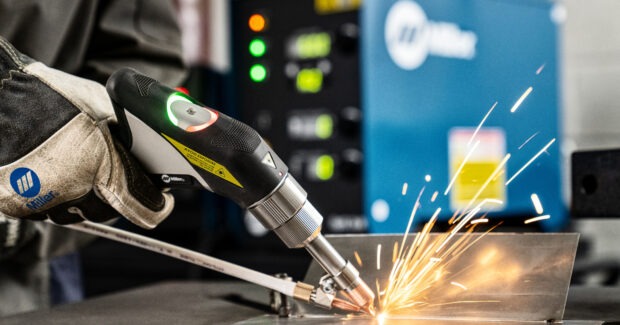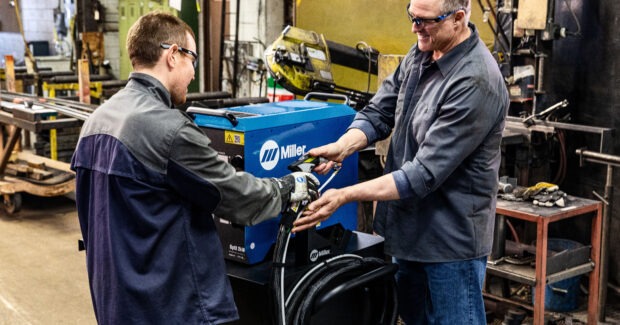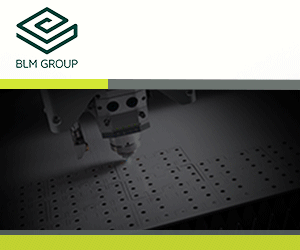How to Tell if Laser Welding is Right for Your Shop
Laser welding unlocks workforce capacity with easy-to-master techniques for new employees, leaving experienced welders time to focus.
Posted: June 14, 2024

Welding technology has been evolving for at least 3,000 years. From the small, circular gold boxes welded during the Bronze Age and the blacksmiths of the Middle Ages to the arc welding pioneers of the mid-1800s and the advent of TIG welding in 1948, welding technology continues to develop to meet the needs of the marketplace.
Most recently, cutting-edge handheld laser welding has emerged, allowing today’s welders to achieve feats that welders in other eras couldn’t have imagined: quality welds that are not only precise and accurate, but also made with speed and efficiency. In a market where skilled workers are in short supply; laser welding is doing what no technology has been able to achieve: simply and quickly allowing welders without experience to execute quality welds with minimal training. In effect, shops that have added laser welding to their operations are multiplying their productivity and profitability.
As with any new technology, there can be uncertainty regarding how good a fit it may be from one operation to another. After all, there’s an investment involved in any upgrade to your current setup. Below is a guide to help you decide if laser welding is the right fit for your shop.
- Your high-volume, low-mix TIG shop is falling short of deadlines and quotas, which is killing your productivity and profitability.
Having ample orders is an ideal situation — unless you don’t have the throughput speed and skilled labor to meet demand. Bottlenecks develop, customers get grumpy, and your workforce burns out. Up to this point, the only solutions have been to add more TIG welders or move toward automation. But, as everyone knows, these investments can be hefty. Today, laser welding bridges the gap for shops that currently have TIG processes in place but can’t fully commit to automation.

Laser welding can alleviate these common problems in a few different ways. First, with speed. Laser welders, such as the Miller OptX™ 2 kW handheld laser welder, have swift travel speeds that boost welding productivity exponentially. Second, reduced heat input allows for less warping of pieces — and it’s easier to create a good weld on thinner materials. That leads to lower weight, lower costs and higher first-pass quality. In another boon for productivity, laser welders often reduce or eliminate the need for pre- and post-weld processing due to the small bead profile and negligible splatter.
This most recent innovation in welding history can unlock the power of your workforce. In today’s welding landscape, it’s projected that 330,000 welding jobs will remain unfilled due to lack of skilled workers during the next five years. That’s a staggering shortage in an already tight labor market. Luckily, new welders and experts can easily pick up laser welders and make quality welds in minutes. Supervisors can tap into this previously unusable work pool and redirect experienced welders to the critical tasks that require TIG and MIG welding. Handheld laser welding fills the gap between the lack of skilled welders and the steep investment for automated welding operations.
- You absolutely must have quality welds.
Your customers need precise welds with tight fit-up and minimal distortion. Laser welding excels in these processes while also managing thinner metals than traditional welding. Not to mention, laser welding provides a lower and more concentrated heat signature than TIG and MIG welders. Take emergency vehicles like fire trucks, for example. These vehicles have historically required ample time for prep/layout time and assembly, not to mention skilled welders. GMAW welding was used for intermittent welds and tacking aluminum cabinets, tanks and vehicle bodies, followed by adhesives to seal and bond the parts to keep water out. However, the speed and ease of laser welding has helped manufacturers reduce layout and prep time by up to 50% while also eliminating the need for sealants because of the distortion-free welds lasers can achieve.
With quality welds comes the need for the correct joint configuration. Laser welding is ideal for many joint configurations, especially spot/plug welds — without the need for drilling or slotting. Lap welds and fillet/inside corners can also be quickly mastered by new welders with a handheld laser welder — typically within one to two welds, versus the weeks of practicing typical of arc welding.
- Your operation welds with a variety of metal types.
Laser welding is surprisingly versatile and ideal for a variety of metal types and thicknesses. Stainless steel, nickel alloys, mild steel, aluminum, galvanized, titanium, brass, copper and dissimilar metals (e.g., stainless steel to copper) are natural fits for laser welding. In terms of thickness, laser welders can do what was once nearly impossible — weld thick and thin metal pieces together. It can also weld thin metals down to 20 gauge (0.040”) and thick metals up to 5/16” single pass.
Because laser welding produces such precise and small or narrow welds versus TIG, it’s the perfect match with the thin sheet metal used in applications that demand top-notch aesthetics, like white goods and commercial kitchens. Laser welding complements agricultural and HVAC equipment without pesky assembly and finishing issues from GMAW. Other ideal applications for laser welding include aerospace and defense, which can require long, straight lines; high speed; and deep, narrow welds of various materials and thicknesses. Laser welding can also be advantageous in fabrication, manufacturing and transportation.
- You’re a stickler for safety.
With any new tech comes different considerations and risk assessment. From an operational standpoint, it’s an ANSI requirement to employ a trained and certified Laser Safety Officer (LSO) to make sure trained personnel are operating the welder safely. The LSO, who can earn the title through in-person or online training by an accredited organization within a few hours, must make certain the environment surrounding the laser welding cell or laser-controlled area (LCA) is safe for people nearby when the laser is in operation. Laser welders are typically operated in welding cells, also known as beam enclosures. These protective barriers are made of materials that absorb reflected laser light.
ANSI requires several safety features for handheld laser welders. One is a key switch to prevent unauthorized users from operating the equipment. ANSI also requires emergency stops, or e-stops, and external door interlocks that prevent the welder from firing if the area is not securely closed off and will stop the welder if someone enters the LCA while the laser is emitting. Handheld laser welders may have additional safety functions, like a continuity clamp, which requires continuity between the torch nozzle and the workpiece for the laser welder to activate. The Miller OptX 2 kW will stop welding if it senses laser energy bouncing back toward the torch or operator.
As welding technology adapts to meet the needs of the 21st century marketplace, laser welding is at the forefront of innovation. Achieving high-quality welds with faster running speed and throughput can usher in an era of advanced productivity and profitability for today’s welding operations. Even in the face of skilled labor shortages, laser welding unlocks workforce capacity with easy-to-master techniques for new employees, leaving experienced welders time to focus on the high-profile tasks that require their skills — all without the need for a cost-prohibitive investment in automation. While it’s impossible to know what the future will bring for technology, it’s certain that laser welding is now at the forefront of meeting the needs of today’s bustling welding operations.


















